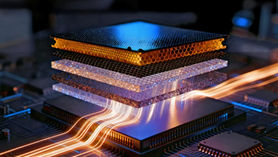Neutrinovoltaic based on graphene - new opportunities for energy generation
- https://oko-planet.su
- Jul 4, 2022
- 4 min read
Updated: Sep 24, 2022
Energy and energy supply issues occupy priority positions in the economic policy of any state. High prices for electricity, heat supply and fuel inevitably lead to a critical domestic political situation due to the deterioration of the economic status and a wave of discontent among the population.
That is why, under the current sanctions policy against Russia, primarily Western countries, it is impossible to completely abandon the purchase of energy resources from Russia. Attempts to quickly find a replacement for energy supplies from Russia will not be crowned with quick success for European consumers and, as is clearly seen today, are more expensive, and in some cases such a replacement is impossible.
However, energy suppliers, including Russia, should think strategically and not expect the fossil fuel era to last indefinitely. Energy importing countries are making great efforts to change the energy development model, introducing at an accelerated pace the capacities of wind generation, solar energy, nuclear power units, hydro generation, including low-capacity facilities. It is obvious that it will not be possible to abandon fossil fuels in the next 20-30 years, development trends, as well as scientific and technological work being carried out at an accelerated pace, do not leave long-term strategic prospects for fossil fuels, primarily because of their finiteness. reserves, as well as for environmental reasons in connection with the critical dynamics of temperature changes on the planet.
In Russia, the extraction of energy resources provides directly filling the state budget, since a significant part of the population does not participate in the creation of added value, receiving wages from the budget, and labor productivity at industrial enterprises is noticeably inferior to advanced foreign similar industries.

Already today, technologies for generating electricity based on the use of the latest developments in the field of nanomaterials are emerging in the world, which allow you to receive electricity directly at the place of its consumption, thus eliminating the need to connect to centralized power supply lines, which means eliminating power losses during the transmission of electricity from the producer to to the consumer, which will undoubtedly become an alternative energy generation based on the use of fossil fuels.
For example, in 2023, licensed industrial production of Neutrino Power Cubes power sources with a net power of 5 kWh, intended for autonomous power supply of households, will begin in Switzerland. The patent for the technology, called Neutrinovoltaic, is owned by the Neutrino Energy Group. Licensed production of Neutrino Power Cubes with 100% localization of production is planned to be organized in Russia as part of the joint Russian-German venture Progressus Neutrino, which was registered in Russia at the beginning of this year. The Neutrino Power Cubes are compact in size, making it easy to place in your home. 6 generating modules are connected in parallel with each other and, together with the electronic control system, are placed in an electrical cabinet. The total gross power of such a power source is about 7 kWh, 2 kWh goes to its own needs to convert the generated direct current by the electronic control system into alternating current 220 V and 380 V, as well as direct current for direct connection of computers and other electronic devices operating on direct current.
What makes the Neutrino Power Cube unique and simple?
The "working element" is a super-dense composite material made of alternating layers of graphene and silicon with the addition of alloying elements deposited on a metal foil. Such nanolayers of doped graphene and silicon make it possible to use the atomic vibrations of graphene to convert various types of radiation, including primarily neutrinos, into electric current. "Graphene" waves can be observed through a microscope with high magnification. When the layers are of the optimum thickness and geometry, these vibrations of the graphene atoms cause a resonance, allowing the graphene to increase the electron recoil upon contact with doped silicon. The combination of graphene layers with silicon and alloying elements, as well as the use of graphene practically without impurities, leads to the fact that graphene electrons distort their movement in the general direction, i.e. there is a constant electric current. The overall effect is what physicists call "oblique scattering," where clouds of electrons deflect their motion in one direction.

A “working element” of size A-4 generates a power of 3 Wh with a voltage of 1.5 V and a current of 2 A. Considering that the application of a multilayer nanocoating leads to the appearance of a positive pole on this side of the foil, and the side of the foil without nanocoating acquires a negative pole, then the "Working Elements" can be connected to each other by connecting them in series with a "stack", like a stack of writing paper, and pressing them together to achieve a reliable serial connection. Such a compressed stack of "Working Elements", placed in a separate case, forms the "Electric Generating Module".
The research work of an international team of leading scientists is coordinated by the president of the Neutrino Energy Group, German mathematician Holger Torsten Schubart, who comments, “In the process of work, we managed to combine the advanced theoretical knowledge of modern science in the field of creating nanomaterials of given characteristics with the results of practical tests. We are confident that the mass industrial production in different countries of Neutrino Power Cubes and Neutrinovoltaic current sources for various purposes, including electromobility, will drive innovative transformations in energy supply and transport in the next 10-20 years.”





















































Comments